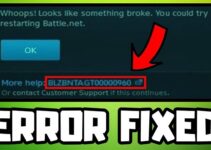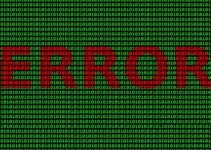You can fix the “A device which does not exist was specified” error message in a number of ways, including reinstalling the device from disc management, switching to a different USB cable, updating the drivers for your chipset and BIOS, checking the motherboard headers, and repairing the drive and permissions. Disk letters can be viewed and modified with a built-in Windows utility.
A Device Which Does Not Exist Was Specified

Driving Privilege Modifications
A common cause of this issue, as we’ve covered in earlier sections of this article, is that your user account lacks the appropriate permissions to access the drive. You can expect to get an error message indicating that the chosen drive is not available if this occurs.
Changing the permissions of your drive in the Properties Window will fix this, as we described; once you’ve allowed access to your user account, the issue should go away. The necessary steps are outlined below.
- Your first order of business is to launch a new window in Windows Explorer.
- After that, a drop-down menu should appear when you right-click on your drive; select “Properties” from there.
- Once you’ve finished, go ahead and open the drive’s settings.
- In the properties box, switch to the Security tab from the offered options.
- Drive Permissions can be modified after clicking the security tab. To achieve this, go to the drive’s settings and click the edit button to make the necessary changes to the drive permissions.
- In the available list of different user accounts, choose the one you are signed into, and from there, under the permissions tab, you have to make sure that the Full Control checkbox is ticked.
- The drive permissions will be successfully updated, and you can now click Apply and then OK to apply the changes.
- Once you’ve finished with these steps, open the drive again, and the problem should no longer be there.
Read Also:
Altering the Allotted Alphabetic Code
As we’ve already established, the error message can appear if the operating system’s letter for the drive doesn’t match the letter that the Disk’s Management programme has given it. When you add a new storage device to your PC, it will appear in the Windows explorer programme and be given a unique letter by the operating system’s management.
Using the Disk’s Management tool, you can modify the letter to fix the issue. The full procedure for this repair is described below:
- You can apply this update by going to the Start menu and looking for the Disk Management programme.
- Launch the programme once you’ve located it.
- Once the programme is running, you can change the drive letter and path by clicking the volume icon and choosing the appropriate choice from the drop-down menu that appears.
- In the new window, select the Change tab.
- Changing the drive name will deactivate your disc temporarily, so in order to implement the changes, click on the Mark Partition as Active option after you’re done.
- At this point, you should turn on and restart your computer.
- Restarting the computer is crucial since it brings all of your modifications into harmony with the system’s current state.
As soon as Windows has finished loading, you can check the Windows Explorer programme to determine if the error has persisted.
Header Tests on the Motherboard
This fix is a little more complicated, and you should only indulge in it if none of the other options works for you. Also, this is not a solution you can adopt at home; if you encounter this issue, you should definitely take your computer to a professional expert.
The issue is most common when connecting an internal hard drive to the SATA headers on your motherboard. The computer must be opened up and the header replaced by hand if it is faulty and does not react.
Read Also:
Conclusion
In this post, we have examined several potential solutions to this problem; we hope that you have gained a thorough understanding of these options. For your convenience, we have created a brief summary of the article’s key points:


